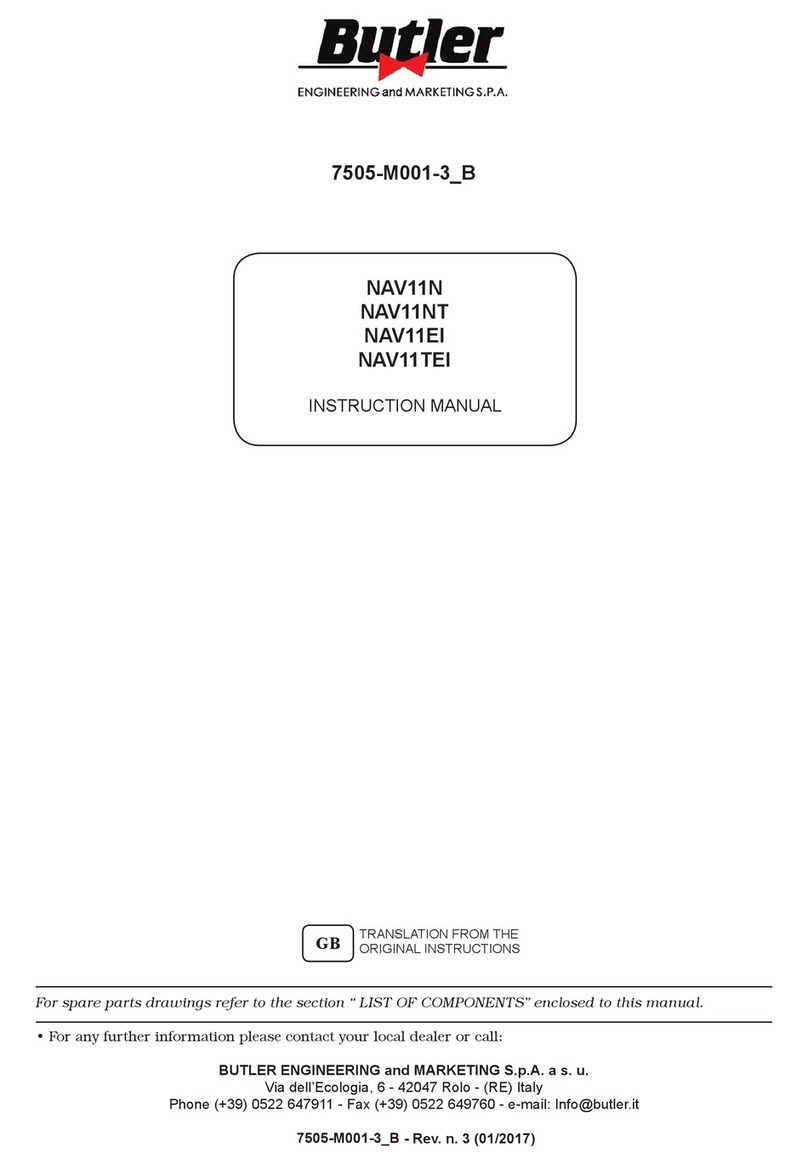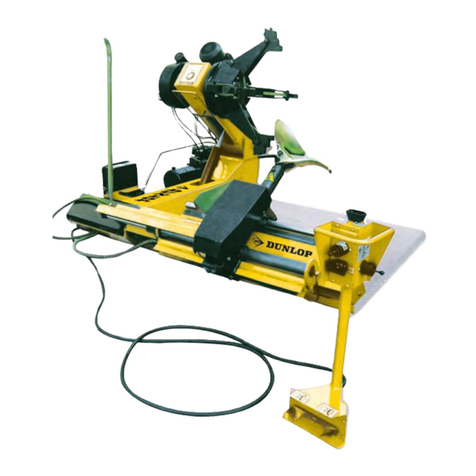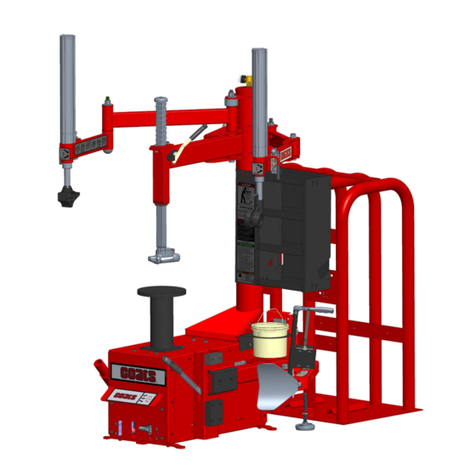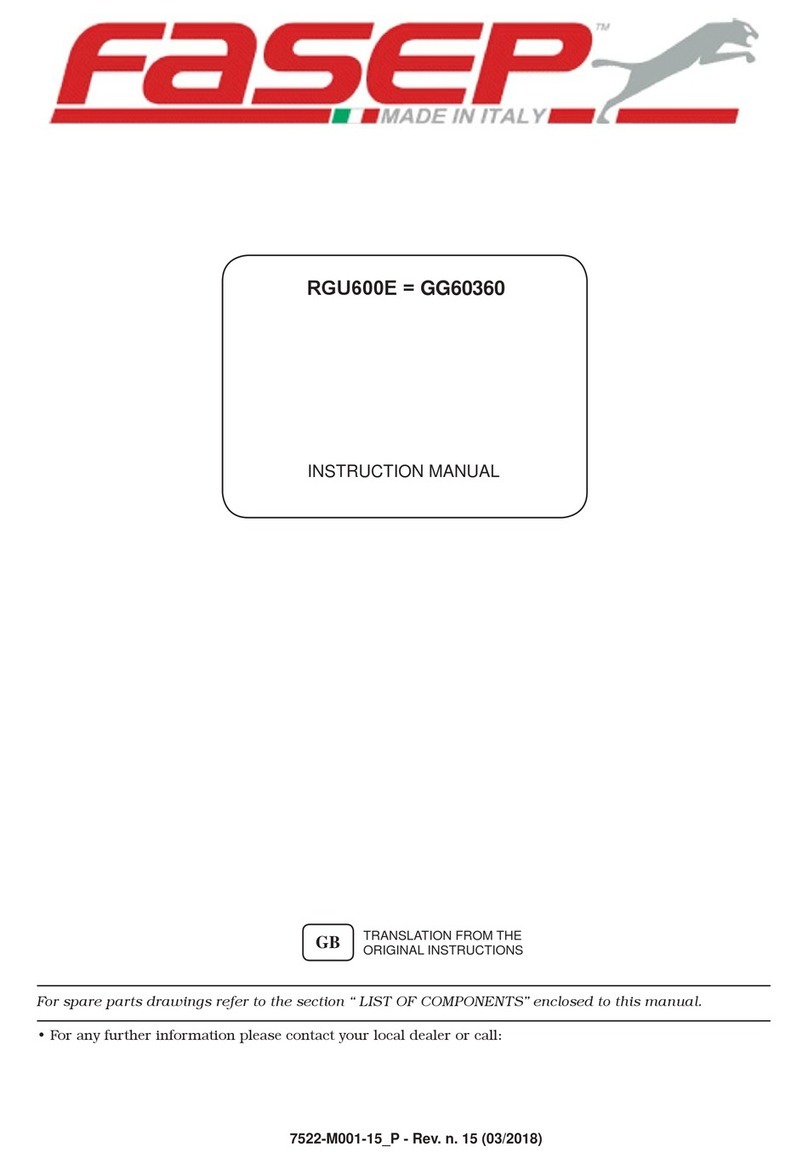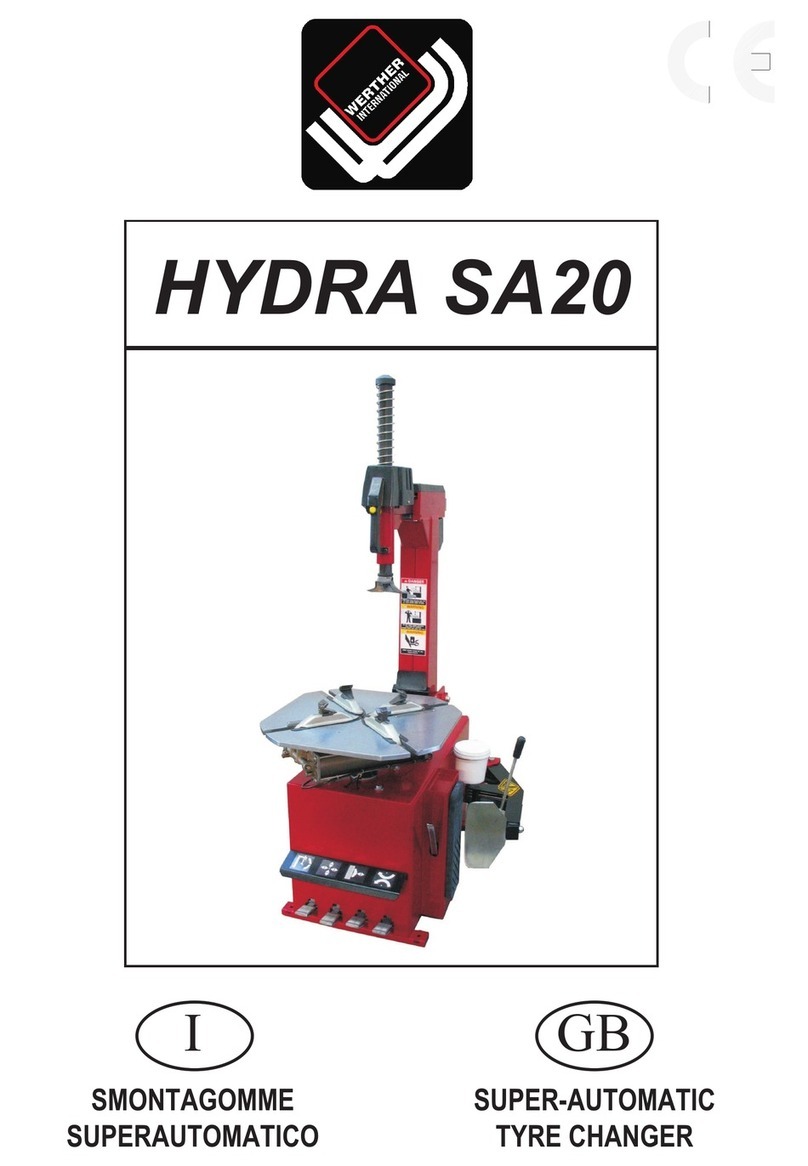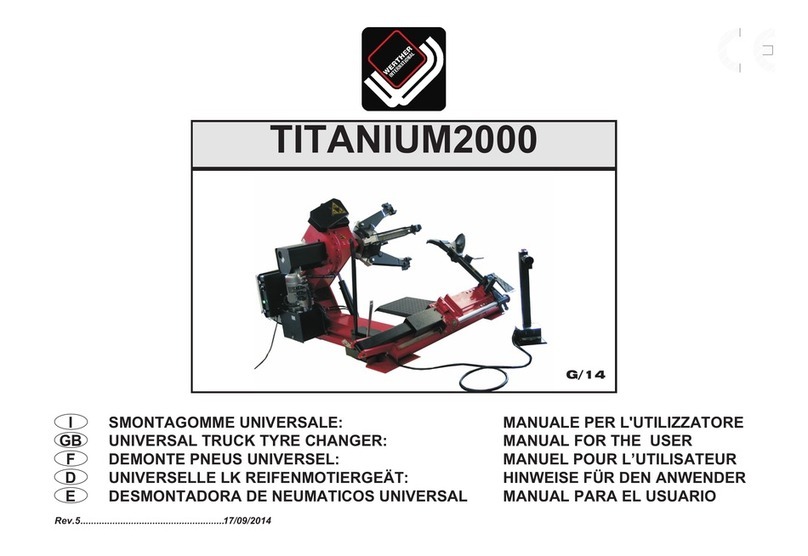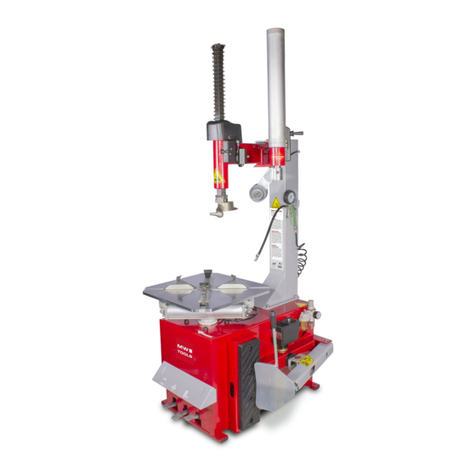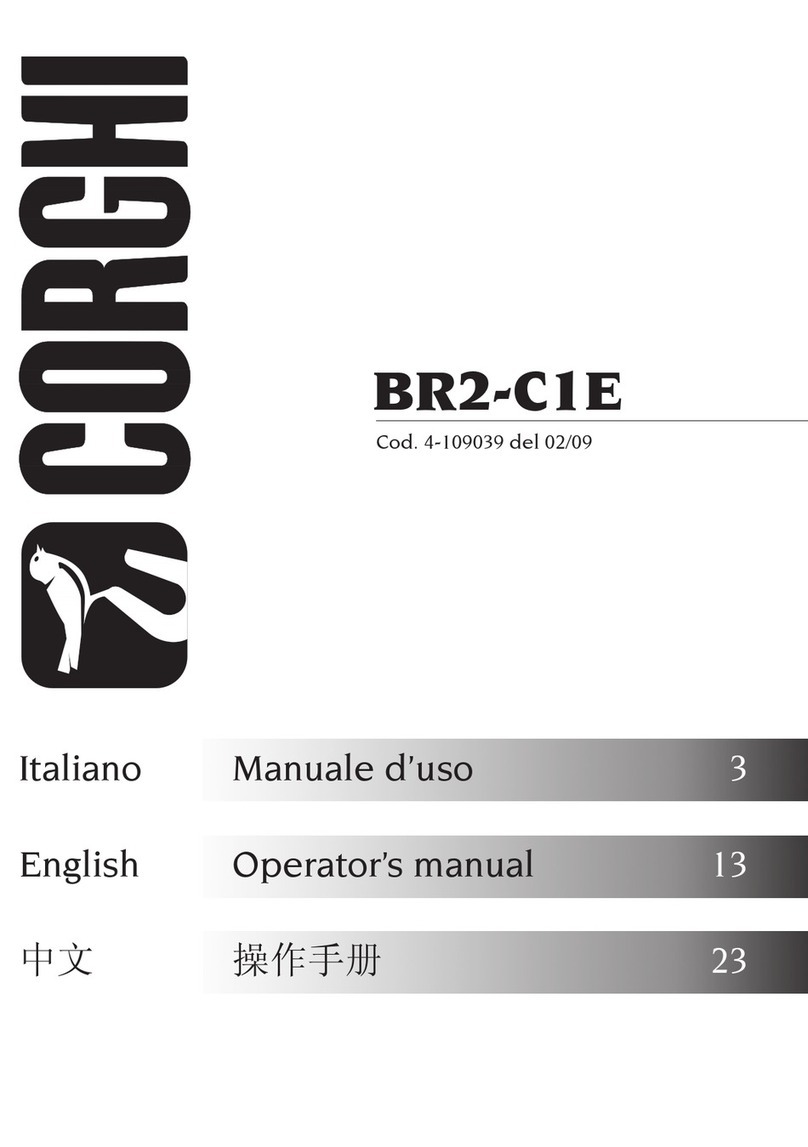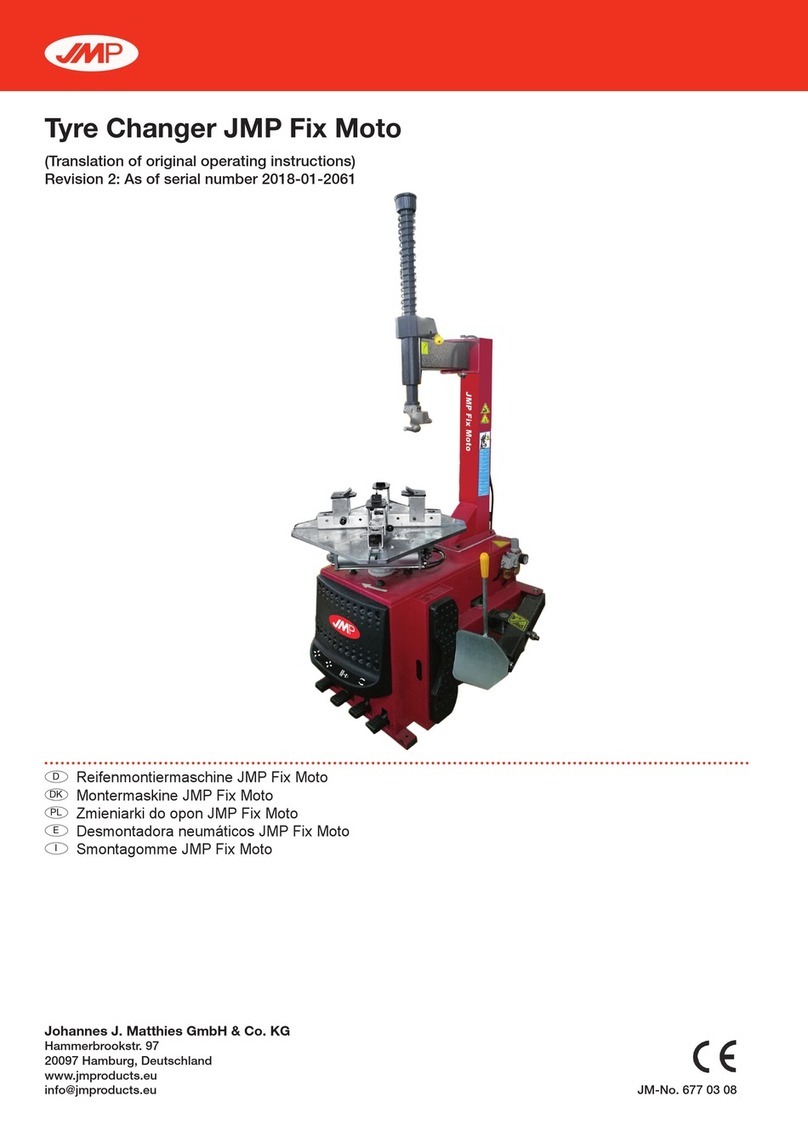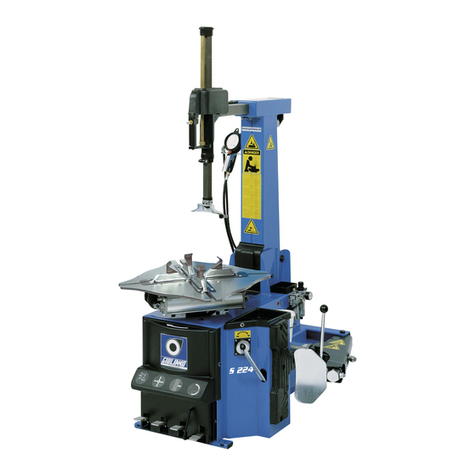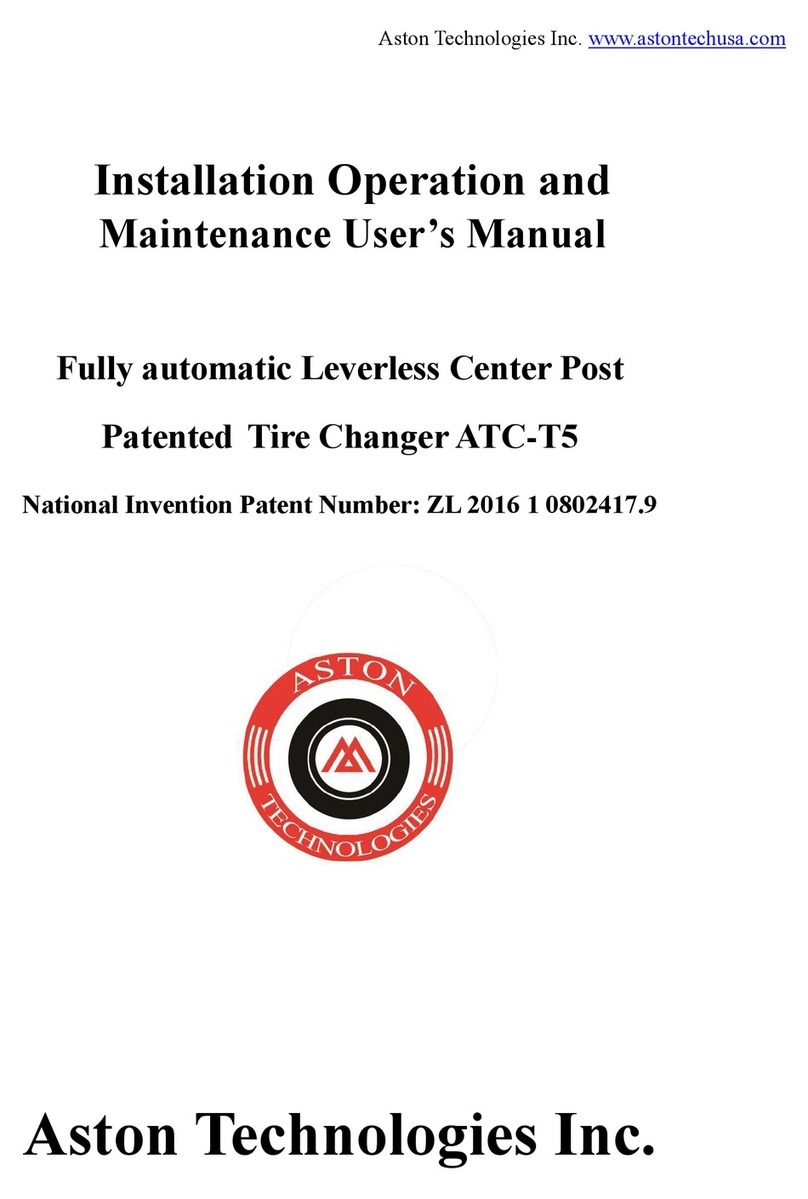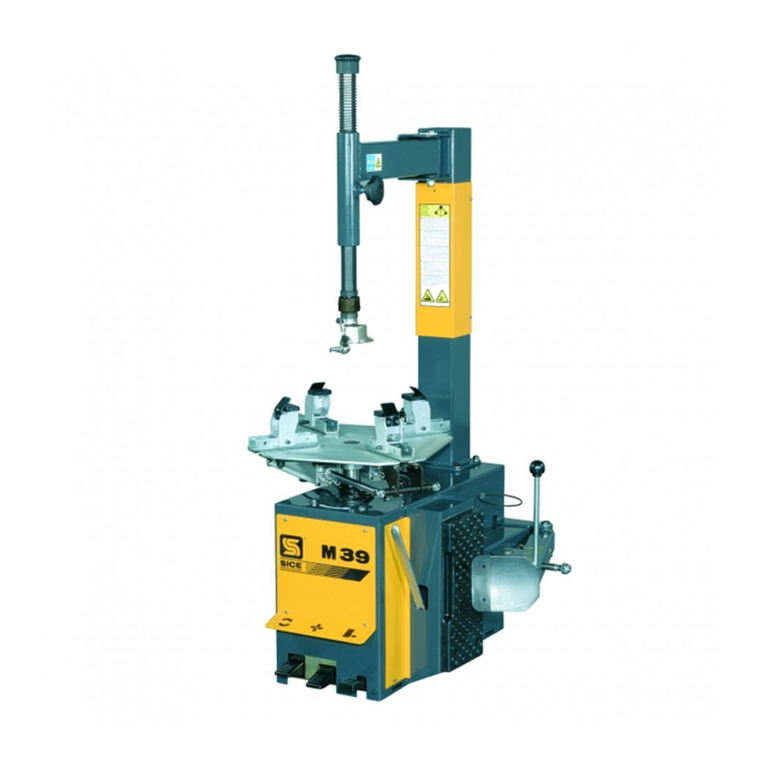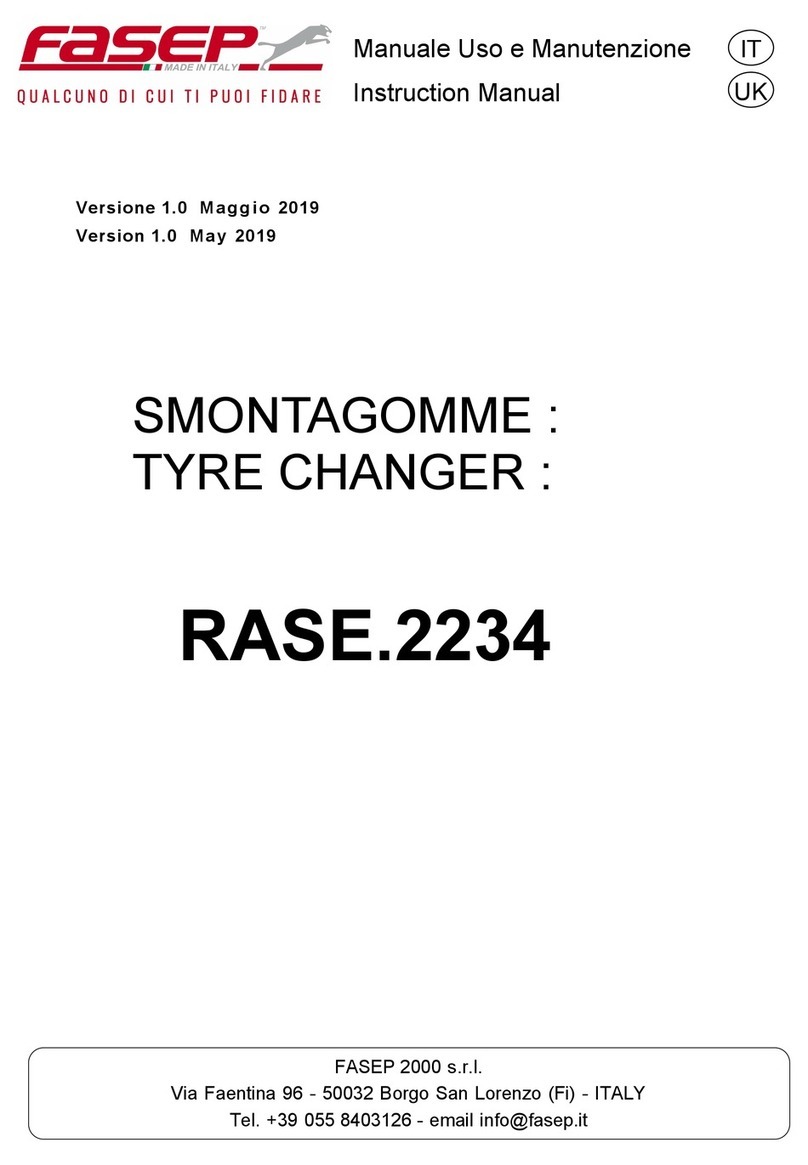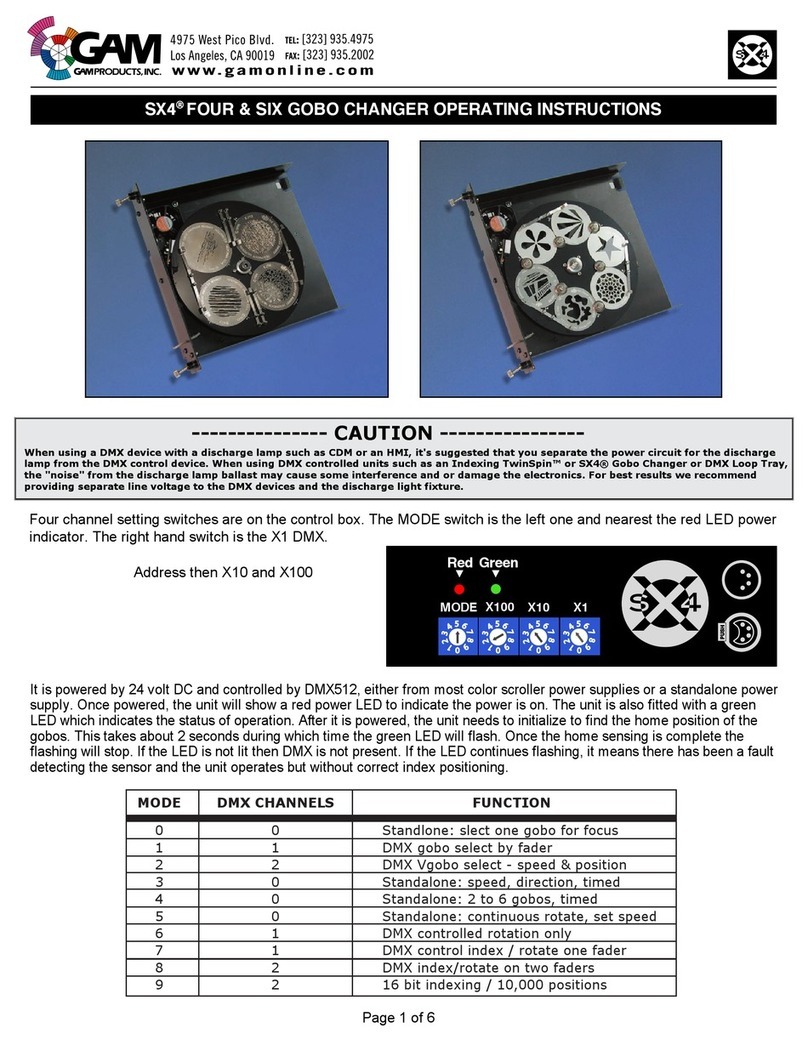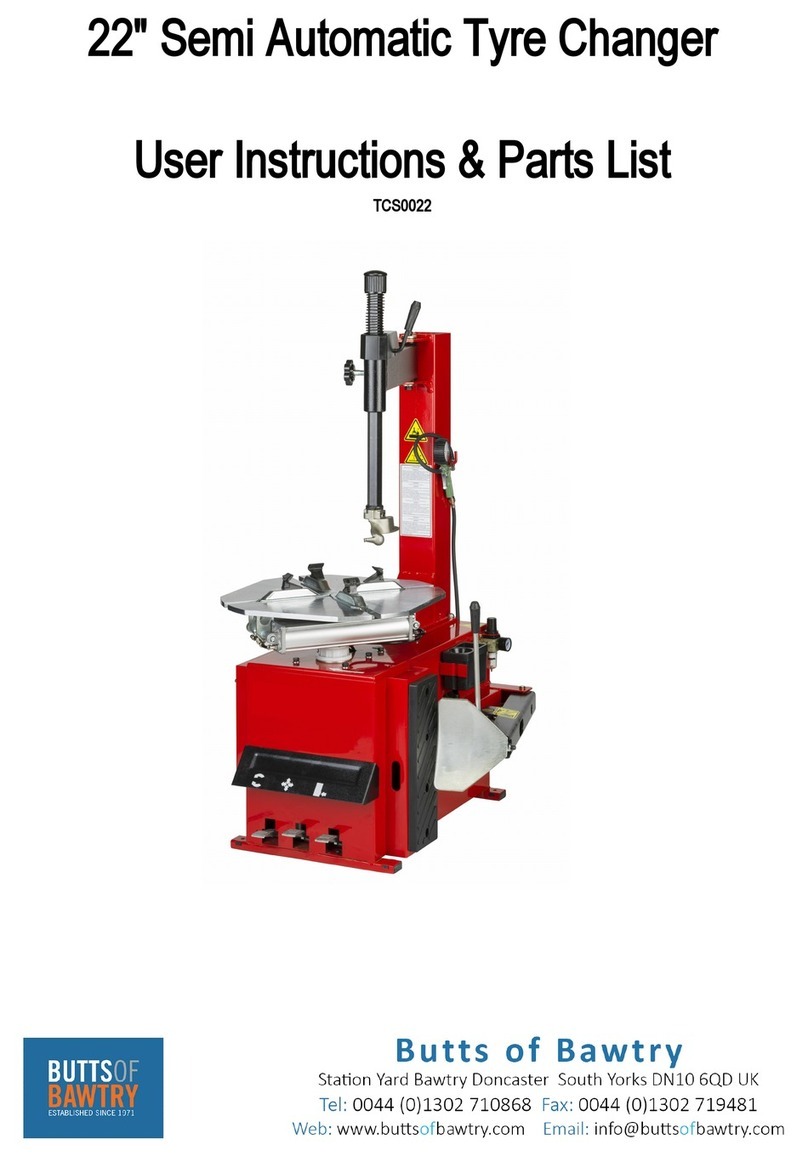REV. 01 2013 4 / 24
CHAPTER 1 – INTRODUCTION
1.1 INTRODUCTION
Thank you for purchasing a product from the line of tire changers. The machine has been
manufactured in accordance with the very best quality principles. Follow the simple instructions
provided in this manual to ensure the correct operation and long life of the machine. Read the entire
manual thoroughly and make sure you understand it.
1.2 TYRE CHANGER IDENTIFICATION DATA
A complete description of the “Tire Changer Model” and the “Serial number” will make it easier for
our technical assistance to provide service and will facilitate delivery of any required spare parts. For
clarity and convenience, we have inserted the data of your tire changer in the box below. If there is
any discrepancy between the data provided in this manual and that shown on the plate fixed to the tire
changer, the latter should be taken as correct.
1.3 MANUAL KEEPING
For a proper use of this manual, the following is recommended:
xKeep the manual near the lift, in an easily accessible place.
xKeep the manual in an area protected from the damp.
xUse this manual properly without damaging it.
xAny use of the machine made by operators who are not familiar with the instructions and
procedures contained herein shall be forbidden.
This manual is an integral part of the manual: it shall be given to the new owner if and when the
machine is resold.
The illustrations have been made out of prototypes pictures. It is therefore
possible that some parts or components of standard production differ from those
represented in the pictures.
1.4 GENERAL SAFETY PRECAUTIONS
The tire changer may only be used by specially trained and authorized expert
personnel.
LOGO
Type:
Volt Amp Kw
Ph Hz
Year of manufacturing:
Air supply: 8-10 bar (115 – 145 PSI)

